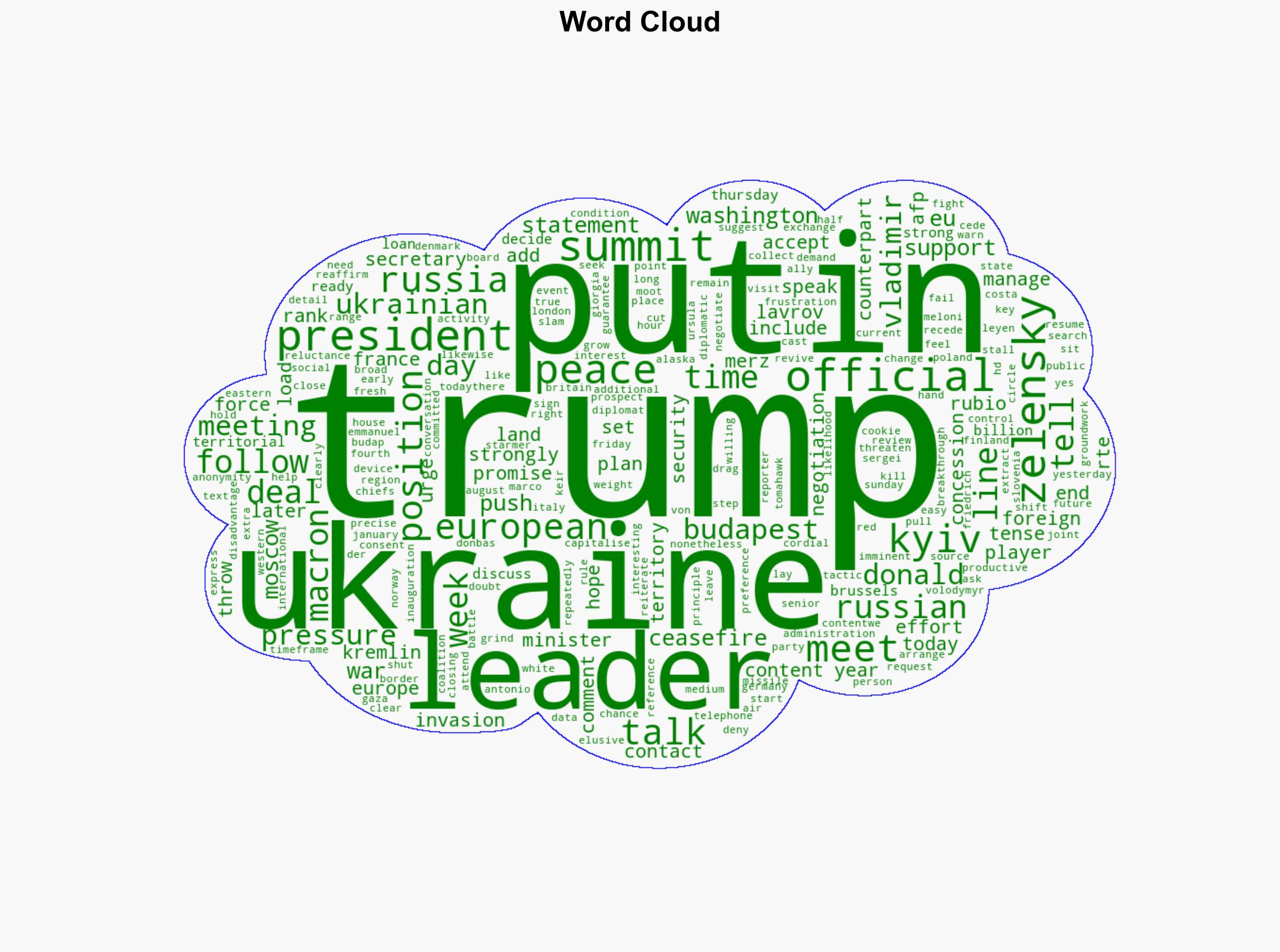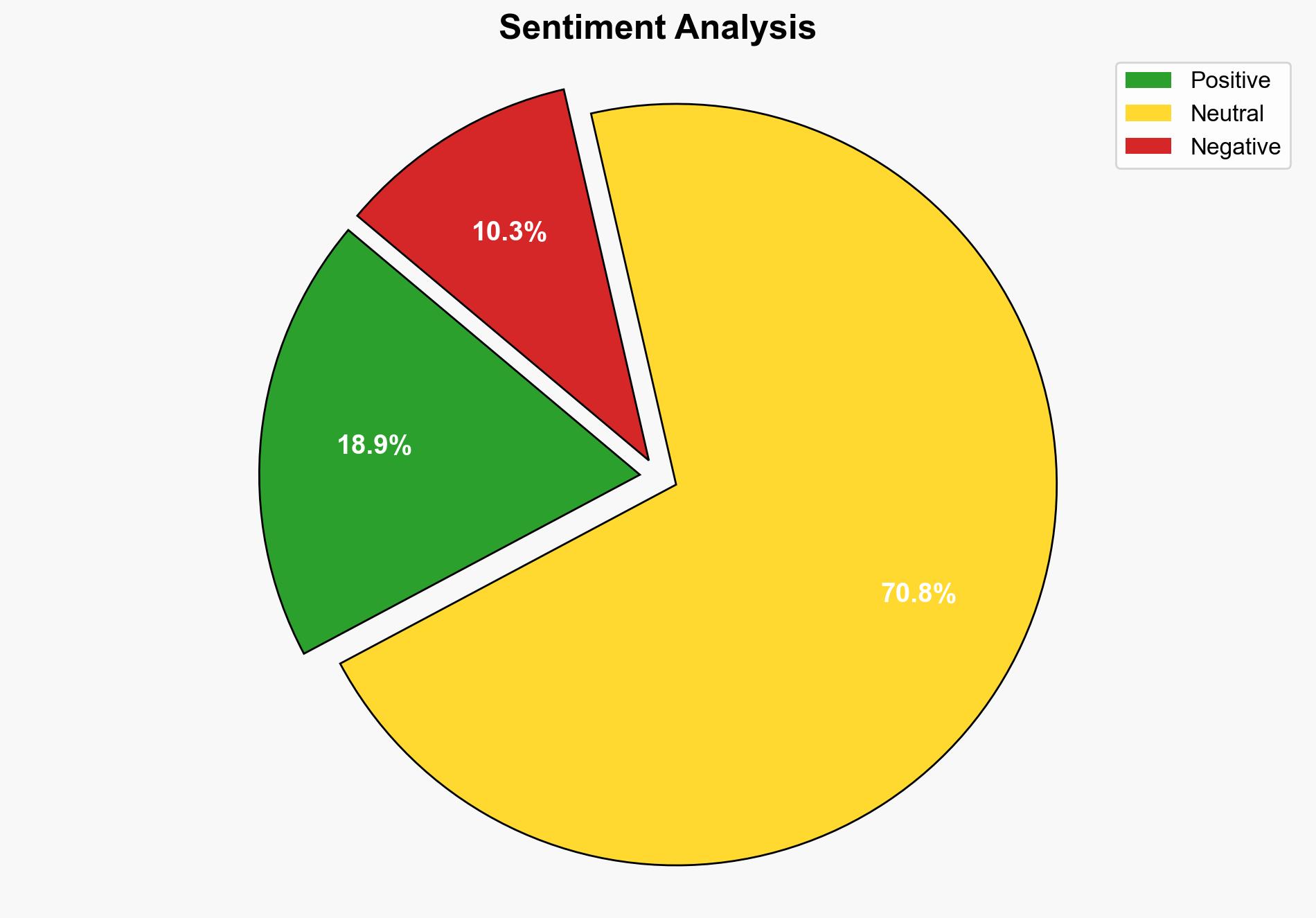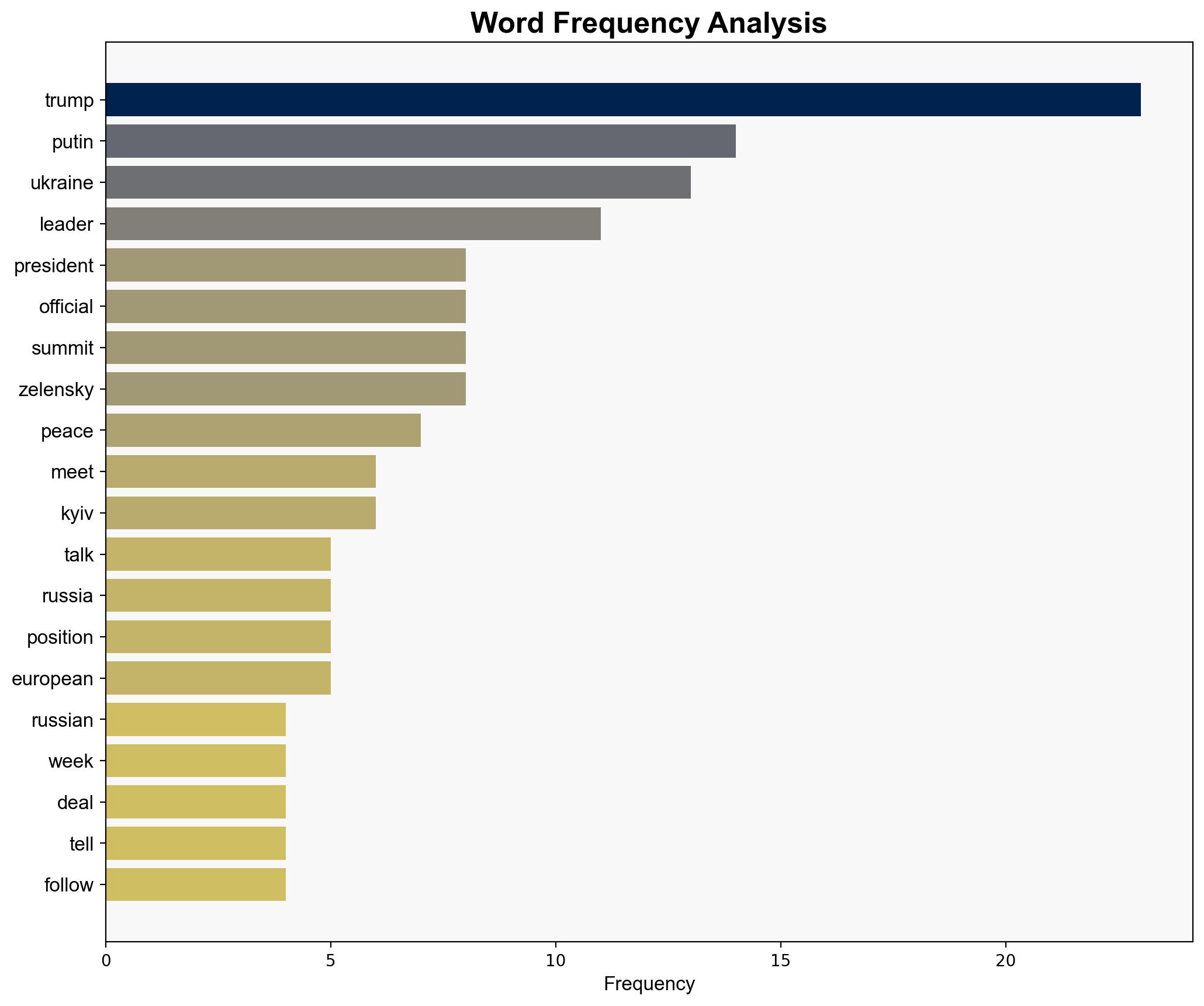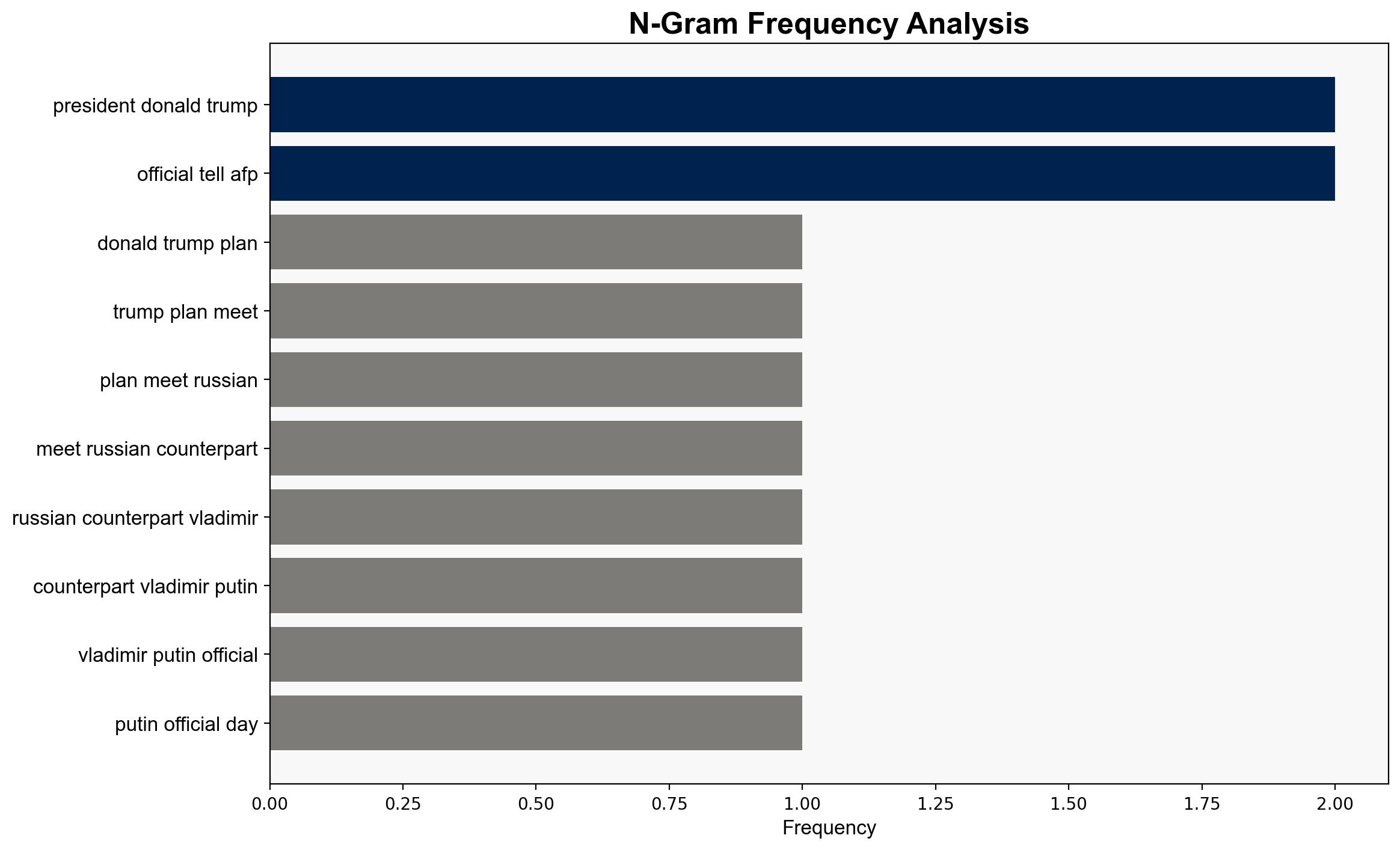European leaders back Trump’s Ukraine ceasefire position – RTE
Published on: 2025-10-21
Intelligence Report: European leaders back Trump’s Ukraine ceasefire position – RTE
1. BLUF (Bottom Line Up Front)
The most supported hypothesis is that European leaders are strategically aligning with Trump’s ceasefire position to exert collective pressure on Russia for a diplomatic resolution in Ukraine. Confidence level: Moderate. Recommended action: Enhance diplomatic engagement with European allies to solidify a unified stance and prepare contingency plans for potential Russian countermeasures.
2. Competing Hypotheses
1. **Hypothesis A**: European leaders genuinely support Trump’s Ukraine ceasefire position as a strategic alignment to pressure Russia into negotiations.
– **Supporting Evidence**: Joint statement by European leaders backing Trump’s position; emphasis on maintaining international borders.
– **Contradictory Evidence**: Historical reluctance of some European leaders to align closely with Trump’s policies.
2. **Hypothesis B**: European leaders’ support is primarily symbolic, aimed at placating the U.S. while maintaining flexibility in their own diplomatic strategies.
– **Supporting Evidence**: Lack of concrete commitments beyond public statements; potential for differing national interests within the EU.
– **Contradictory Evidence**: Unified public statement suggests a higher degree of commitment than mere symbolism.
3. Key Assumptions and Red Flags
– **Assumptions**: European leaders believe that a unified stance with the U.S. will effectively pressure Russia. Trump’s diplomatic efforts are perceived as credible by European counterparts.
– **Red Flags**: The absence of a detailed plan for the ceasefire; potential for internal EU disagreements; reliance on Trump’s fluctuating foreign policy positions.
– **Blind Spots**: Potential Russian strategic responses and the impact on broader European security.
4. Implications and Strategic Risks
– **Geopolitical**: A unified Western stance could lead to increased Russian aggression or attempts to divide the EU and U.S. through diplomatic or economic means.
– **Economic**: Prolonged conflict or escalated tensions could disrupt European energy supplies and markets.
– **Cyber**: Increased risk of cyber operations targeting European and U.S. infrastructure as retaliation.
– **Psychological**: Potential erosion of public confidence in European leadership if perceived as overly reliant on U.S. policy.
5. Recommendations and Outlook
- **Mitigation**: Strengthen EU-U.S. diplomatic channels to ensure coherent messaging and contingency planning.
- **Exploitation**: Leverage the unified stance to push for broader international support for Ukraine.
- **Scenario Projections**:
– **Best Case**: Successful negotiations lead to a ceasefire and de-escalation.
– **Worst Case**: Russian escalation leads to broader conflict affecting European security.
– **Most Likely**: Continued diplomatic stalemate with periodic escalations.
6. Key Individuals and Entities
– Donald Trump
– Vladimir Putin
– Volodymyr Zelensky
– Marco Rubio
– Sergei Lavrov
– Emmanuel Macron
– Friedrich Merz
– Keir Starmer
– Giorgia Meloni
7. Thematic Tags
national security threats, geopolitical strategy, European diplomacy, Russia-Ukraine conflict




